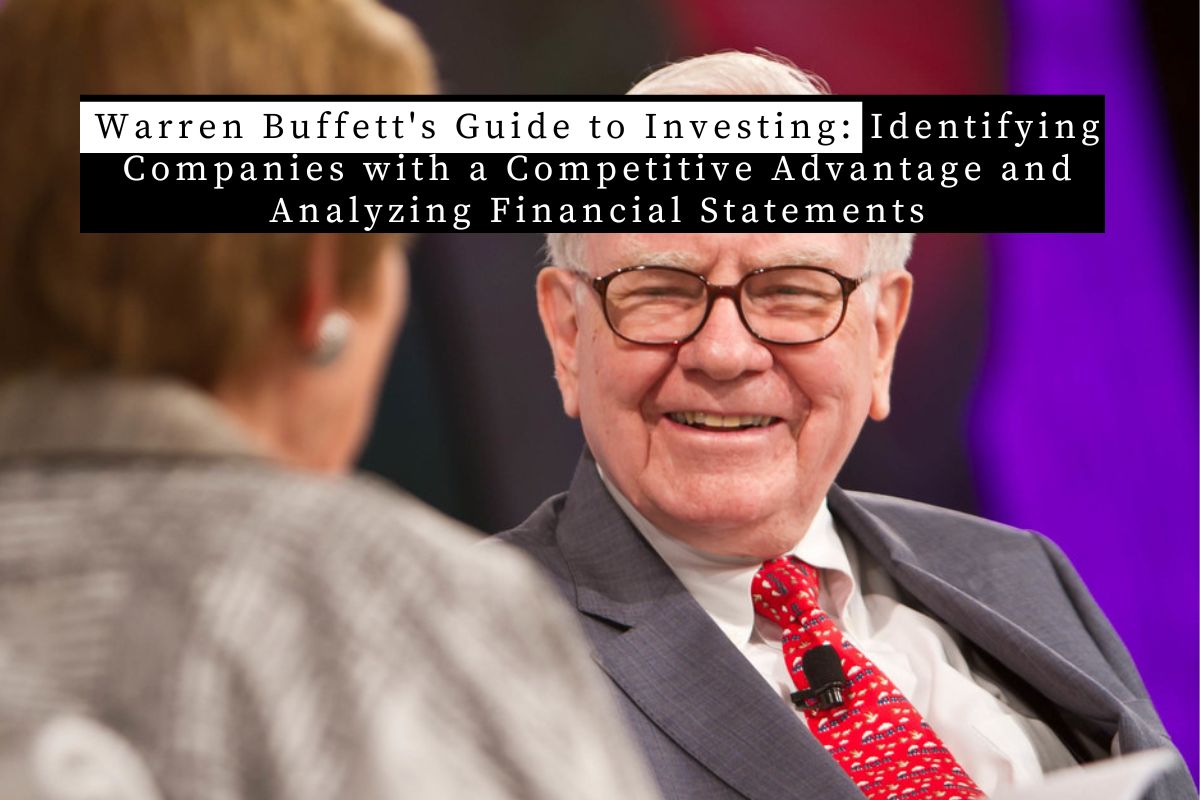Warren Buffett, one of the wealthiest people in the world, has built his fortune by investing in companies with a sustainable competitive advantage. Think Coca-Cola, Moody’s, or See’s Candy. In this article, we will explore how to identify companies with a competitive advantage and how to analyze financial statements to mimic Warren Buffett’s success.
Table of Contents
ToggleConsistency is King
Buffett believes that consistency is the key to identifying investments with a sustainable competitive advantage. When evaluating companies, he looks for consistent earnings, low debt, growing earnings, low spending in capital expenditures, R&D, consistent profitability, and more. While looking at the last 10 years is a good start, Buffett looks for companies with longer track records, like Coca-Cola, which has been around for over 120 years. Selling the same product for a long time, such as Coca-Cola, reduces costs, which results in more money for shareholders. Additionally, compound interest tax-free makes a significant impact on shareholder’s pockets, something that has made Warren Buffett incredibly wealthy over the past 50 years.
What Warren Buffett is Looking for in an Income Statement
When evaluating the income statement, Warren Buffett looks for consistency in the bottom line. Take Apple, for example. Over the past ten years, Apple has shown great consistency in net earnings, which is impressive. While not having the track record of Coca-Cola, its products have been relatively durable, like the iPhone that has remained similar since its release in 2007. Apple’s earnings have also grown at a steady pace. Warren Buffett also looks for high and consistent gross margins, which means the greater the profitability becomes when the company sells more. Warren Buffett prefers to invest in companies with a gross margin of 40% or more. Finally, he compares the bottom line to the top line and calculates the net margin. Companies with a sustainable competitive advantage have higher net margins than their competitors. Apple beats both Samsung and Huawei in this regard, with a net margin of over 20%.
What Warren Buffett is Looking for in a Balance Sheet
Buffett likes to look at retained earnings, which are added or withdrawn from each year, depending on whether the company is reinvesting its net income or not. He typically likes to see steady growth here, indicating that the business is profitable and identifies good reinvestment opportunities. For example, Berkshire Hathaway’s retained earnings showed strong growth over the past decade. Apple, on the other hand, doesn’t show significant growth in this figure.
What Warren Buffett is Looking for in a Cashflow Statement
Another key financial statement that Warren Buffett looks at when analyzing a company is the cash flow statement. Specifically, he focuses on a company’s ability to generate cash flow from its operations, as this represents the true earnings power of the business. Buffett believes that earnings reported on the income statement can be manipulated through accounting practices, but cash flow from operations is a more reliable indicator of the company’s financial health. He also looks for companies that are able to reinvest their cash flow back into the business at a high rate of return, indicating that management is making wise investment decisions. Additionally, Buffett pays attention to a company’s use of debt and its ability to pay off debts using its operating cash flow, as he prefers companies with low levels of debt and strong cash flow to support future growth. By analyzing a company’s cash flow statement, Warren Buffett gains a better understanding of its ability to generate profits and invest in future growth opportunities.
Conclusion
Investing like Warren Buffett requires identifying companies with a competitive advantage and analysing financial statements. Consistency is key when evaluating companies. Look for companies with a long track record and a durable competitive advantage. When analyzing income statements, look for consistency in the bottom line, high and consistent gross margins, and high net margins.
When analysing balance sheets, look for steady growth in retained earnings, which shows whether the business is profitable and has opportunities for reinvestment.
Finally, when analysing the cash flow statement he focuses on a company’s ability to generate cash flow from its operations as a reliable indicator of its true earnings power and looks for companies that can reinvest their cash flow at a high rate of return. Buffett also pays attention to a company’s use of debt and its ability to pay off debts using its operating cash flow. This analysis helps him identify companies with low debt and strong cash flow to support future growth.
By following these guidelines, you’ll be on your way to mimicking Warren Buffett’s success. Remember, it takes patience, discipline, and a willingness to learn, but the rewards can be significant.
TL;DR
- Warren Buffett’s success is based on investing in companies with a sustainable competitive advantage.
- Consistency in a company’s earnings, low debt, growing earnings, low capital expenditures and R&D, and consistent profitability are key factors in identifying such companies.
- Companies with longer track records, like Coca-Cola, tend to have a durable competitive advantage and reduce costs, resulting in more profits for shareholders.
- When evaluating an income statement, Buffett looks for consistency in the bottom line, high and consistent gross margins, and higher net margins than their competitors.
- When analysing a balance sheet, he looks for steady growth in retained earnings, indicating good reinvestment opportunities.
- Warren Buffett pays attention to a company’s cash flow statement and focuses on its ability to generate cash flow from operations, reinvesting that cash flow at a high rate of return and low levels of debt.
Further Reading and Sources:
Berkshire Hathaway Letters to Shareholders 1965-2021
Additional Resources
To keep learning and advancing your career, we highly recommend these additional resources:
Top 5 Takeaways from the Essays of Warren Buffet
Warren Buffett’s Road to Success: How A Paperboy Became A Billionaire Investor
7 Financial Models Used by Investment Bankers












